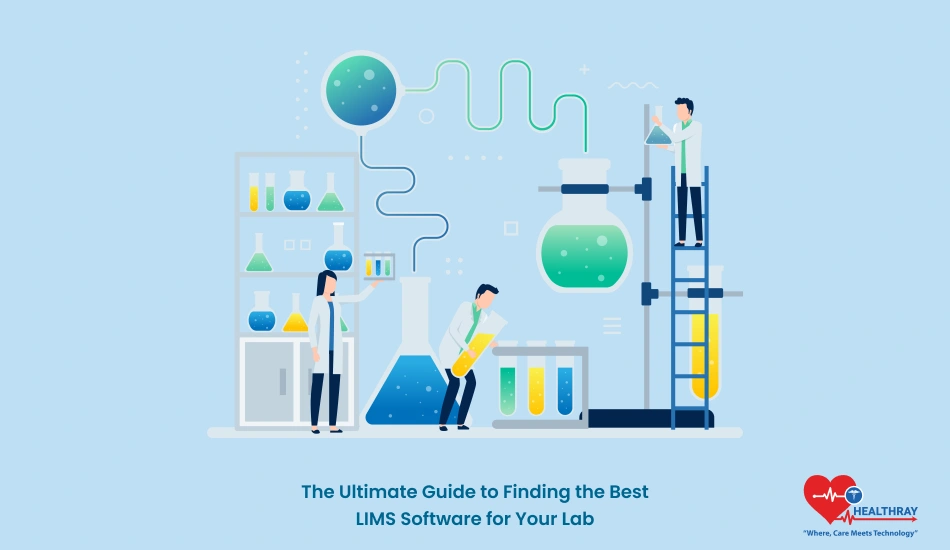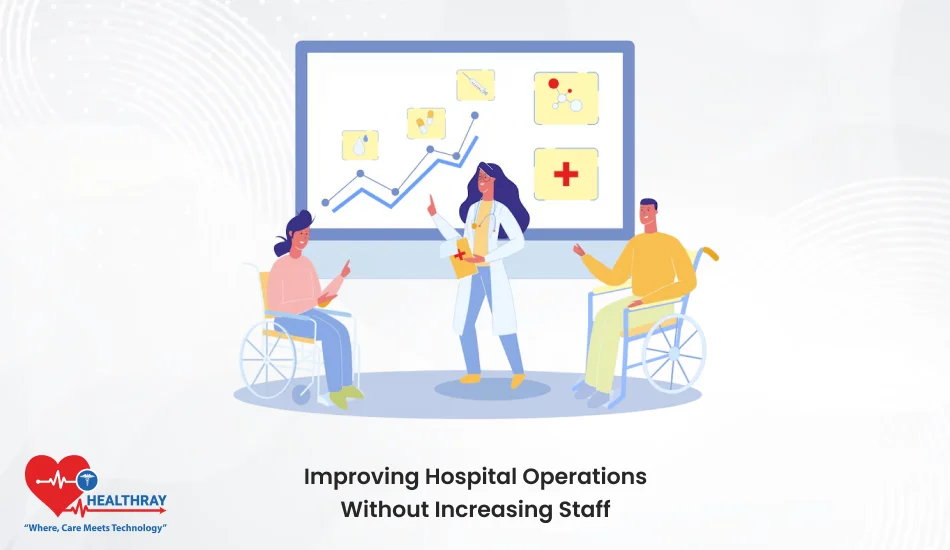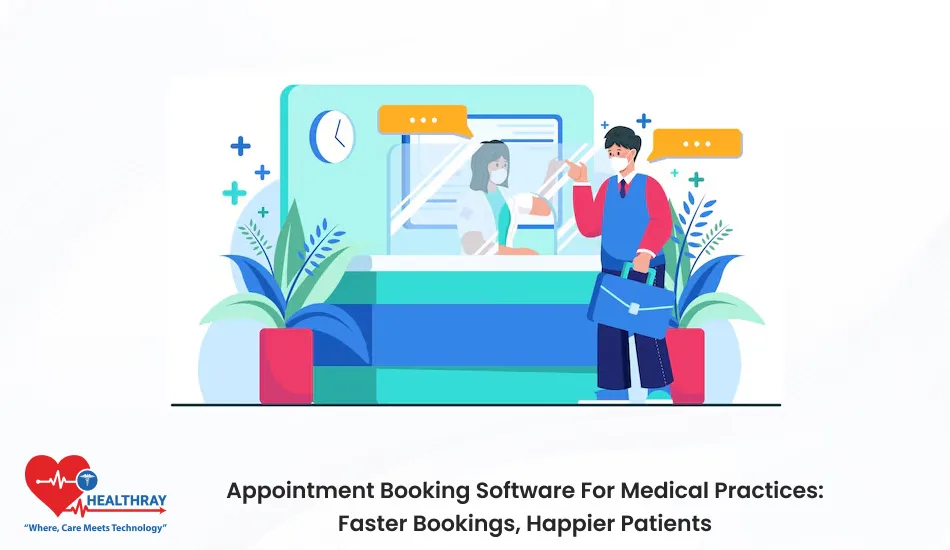A lab manager knows the core of every lab’s operations lies in handling proper, organized, and secure data. And LIMS (Laboratory Information Management System) may be a silver bullet to get that done, but with thousands of options on the market, where do you even start? To help answer this, let’s begin by what a LIMS does and why it matters so much.
Key Benefits of Implementing a LIMS

To lab operators and owners, deploying a Laboratory Information Management Systems (LIMS) is not just a matter of digitizing procedures. An appropriately chosen LIMS have the potential to reorganize lab workflow, providing groups of people with greater control over data, increased productivity, and easier compliance. Here’s a deeper look at the advantages a LIMS can bring to your lab:.
Enhanced Data Accuracy and Compliance
Data accuracy is vital in a lab environment. By using LIMS, laboratories will be able to also replace the man-made data entry by the automated, rule-based data entry, that is based on specific workflows. This paradigm has a significant reducing effect on human error and it is particularly useful or advantageous in situations where complex or repetitive human actions need to be carried out. A LIMS can also facilitate data standardization by defining specific formats and data collection procedures throughout the lab, thus providing uniform consistency.
The LIMS also aids compliance for labs subject to regulatory guidelines, through providing data integrity checkers and audit trails. Audit trails track all modifications and the identity and time of the modification. This data can be very important during audits/inspections, since it can confirm that your laboratory conforms to the requirements of data security and data accuracy standards. Certain LIMS additionally offer tailoring support for regulations such as CLIA, HIPAA, or ISO, among others, based on the user’s field.
Streamlined Workflows and Increased Productivity
One of the strengths of a LIMS is workflow automation, which streamlines manual, repetitive lab work, thereby slowing down lab processes. For example, LIMS can automatically learn to register, track and generate reports of samples. This is highly useful for high-throughput laboratory settings, in which manually processing a high volume of samples takes time and contributes to bottlenecks.
Automatically performing these tasks makes a LIMS yield not only a greater productivity, but also allows a lab technician to dedicate effort toward performing and solving more complex analytical tasks. Additionally, as workflow optimization can avoid staff burnout by minimizing a redundant workload and allowing lab mates to spend their time on meaningful work, it is also a win for lab and personal satisfaction.
Improved Data Accessibility and Security
A LIMS consolidates all lab data, which is directly available to authorized personnel and enables the whole team to operate on a single source of reality. In contrast to potentially cumbersome and insecurely managed paper-based systems or spreadsheets, a LIMS offers immediate data accessibility among departments, regardless of whether team members are working at a distance.
Enhanced data accessibility goes hand-in-hand with robust security measures. Using LIMS, you can implement role based permission, such that every data item is accessible to the specific team member only who has privilege to interact with the item. Not only it protects confidential information but also ensures data integrity.
Scalable Solutions for Growing Labs
As labs expand and change, they require systems that can scale with them. LIMS platforms are generally designed to be scalable, allowing labs to add users, integrate new instruments, or handle increasing data loads as they grow. Such versatility makes it possible for laboratories to bypass the need for a complete system redesign as they scale up, thereby making LIMS an affordable, sustained investment.
Scalable LIMS enables labs to incorporate new features or modules whenever they have the need for them, whether they are extending operations, new testing systems, or hiring personnel. To remain competitive and agile labs, this ability is paramount.
Cost Savings Over Time
Although an initial cost is involved in setting up a LIMS, overtime the costs savings can be significant. Automating repetitive manual work and reducing errors allows a LIMS to save on expenses for retesting samples, erroneous reporting, and loss of samples. It and hence reduces paper and storage requirements, in turn enabling labs to scale down physical and operational costs.
With streamlined workflows and lower error rates, labs often see an increase in operational efficiency and a decrease in costly mistakes, which can offset the upfront costs of implementing a LIMS. In the long run these buffers help to make the operation more viable and profitable.
Key considerations when selecting a (LIMS) for your laboratory

Selecting the right Laboratory Information Management System (LIMS) involves balancing many factors, especially since labs can vary widely in needs and workflows. The following are the main points to take into consideration during the LIMS selection process, to guarantee that the selected solution matches your lab’s particular needs.
Assessing Your Lab’s Specific Needs
There are also specific requirements depending on the size of the lab, the research focus, and sample types that are analyzed. Begin by describing what your laboratory is most in need of from LIMS Software. Some labs might make sample tracking and data management investments in a regulatory way, while other labs might need high-throughput data processing to be automated.
Also, consider any unique features you may need. [R] Comorbidity with features of integration that, in turn, require integration with external software, such as Electronic Lab Notes (ELNs) or customer relation management (CRM) tools, may be important if interaction with external collaborators is a regular part of lab practice. Identifying these requirements at the earliest stage possible will enable the LIMS that they require to be scoped in an intelligent way that excludes unnecessary, optional, and add-ons features.
Vendor Evaluation and Demos
Evaluating LIMS vendors is a critical step. Strengths of vendors are diverse and careful scrutiny of vendor specializations and user feedback is in order. Look for vendors with experience working in your field or with similar lab types, as they’ll likely have a better understanding of your specific requirements.
It is highly desirable that most vendors offer software demo or trial. Utilize these demos to test usability and functionality. A hands-on screening trial enables you to assess both the feasibility that intuitively, that is, you will be able to work with the LIMS in a natural way, and the ease with which you will navigate the LIMS menu, and whether the LIMS will cope with your lab activity without interruptions in its functioning. Invite a number of team members to review it as a LIMS change will directly influence the daily work of all members of your team.
Budget and Total Cost of Ownership
The cost of a LIMS is not only the cost of the initial purchase. That is, while budgeting, do not forget the total cost of ownership (TCO), i.e., the cost not only of the software license but also of any hardware required (for local installations) and of maintenance costs. Subscription-based LIMS have a per-user fee, while one-time license fee LIMS exist.
However, in addition to those expenses, there is also training cost and, potentially, a cost for customisation. If specific customized features are required, vendors should be contacted for cost estimates, as such features may vary substantially. Note that although an inexpensive LIMS may sound tempting, then the more cost expensive LIMS that fits your requirements can result in cost savings in the end by enhancing efficiency and reducing error.
Compatibility and Integration
For the vast majority of labs LIMS have to tightly integrate with current infrastructure and lab equipment. With the Instrument, data storage system, or external software interface (etc) as a base to build up efficient workflow is also very important. However, as a step in the LIMS selection process, it can be beneficial to have an understanding of the fundamental systems within the lab and the presence of integration capabilities within a chosen LIMS.
Second, ensure the LIMS provides open APIs, or has out-of-the-box integration with widely used lab instruments. Open APIs help to let your team customize and integrate into your lab as it scales up or its workflows change.
Scalability and Flexibility
Labs change over time. Whether it’s due to increased sample volume, new regulations, or expanding services, a good LIMS should grow with your lab. Verify that the LIMS that you select will be capable of handling an increase in data volumes, allow more users, and natively add in new modules if necessary.
Flexibility is just as important. As such, a customizable LIMS, and thus allows you to configure workflows, fields, and reports based upon the specific needs of your lab. It is a common experience of practice that ready-to-deploy, “off-the-shelf” solutions do not scale well as they lack flexibility to accommodate idiosyncratic workflows[1] . If flexibility is a must, favour those LIMS solutions that are designed to be configurable.
Customer Support and Training
A LIMS is a continuous decision, and vendor support could impact the decision quite a bit. Reliable customer support” is the ability to avoid problems and technical issues as soon as possible, thus minimizing disruptions. For evaluating vendors, request for vendor support hours, vendor response time, and what types of support they offer (for example, phone, email, or chat).
Team training is equally important, but much more in the case of complex or flexi parts LIMS. The training session should be demonstrated by the vendor, which should include user manuals or online tutorials. Most LIMS providers give on-site training, whereas some provide training from a distance or through video-based training courses, and it can really help your team to feel great about the system.
A suitable choice of LIMS should be taken based on current requirements and prospects for the future. Based on this, you can select a suitable solution that best fits your needs at the laboratory. This will allow efficient workflows and one that can follow you as the size of the laboratory grows.
Why Healthray Comes Out as the Best LIMS Company?

Like LIMS, for reliable and deformable environments in labs, Healthray is one of the pioneers on the market. Healthray’s LIMS is tailored to heterogeneous laboratory workflows and configurable for better sample tracking, data management, and compliance. Their system features high automation capabilities that can be leveraged advantageously by laboratories for decreasing manual labor, errors, and in general, efficiency.
Healthray is scalable and, therefore, a perfect fit for laboratories with an expectation of growth. Whether your laboratory is expanding or changing the nature of tests done, Healthray can LIMS be reconfigured without the necessity of system wide change. Furthermore, Healthray is famous for excellent customer support, having a dedicated team guiding labs through setup, providing ongoing assistance, and ensuring a smooth transition for lab teams adopting the system.
Healthray’s LIMS is a high potential solution when the requirement lies in finding that provides functionality along with flexibility and has the response of high-end support. Since it brings forth a friendly user interface combined with the fact of high degrees of customization at a level of massiveness, Healthray possesses wide-reaching ability to unleash revolution on lab productivity and the quality of the data.
Conclusion
In lab environments, choosing the best LIMS to apply in your lab highly influences the output of your laboratory and the quality of data produced by the lab environment. A properly designed LIMS can not only improve tasks and information but also harmonize with routine work in a lab and evolve to fit the dynamics of the lab. However, after weighing the specific needs of your lab, vendor choice, long-term cost-effectiveness, and strategy for future growth, it is ultimately justifiable to find a LIMS that performs sufficiently to maximize the efficiency of your lab. A good Hospital Management System will allow you to disengage from manual work, streamline compliance, and provide a safe and central repository for all your data requirements.
To dispel any lingering doubts, here are some answers to some of the most common questions about the selection and installation of a LIMS.





